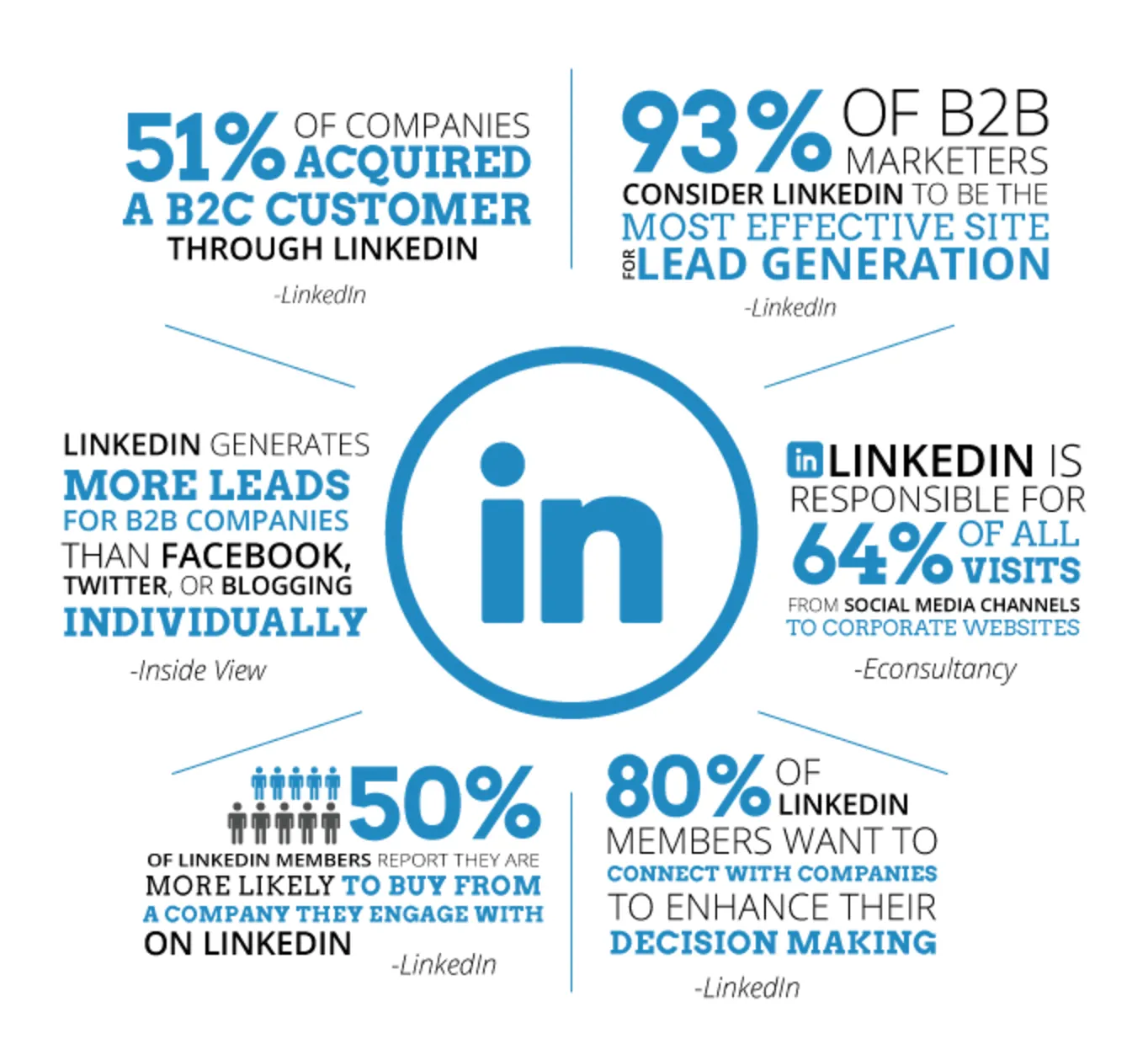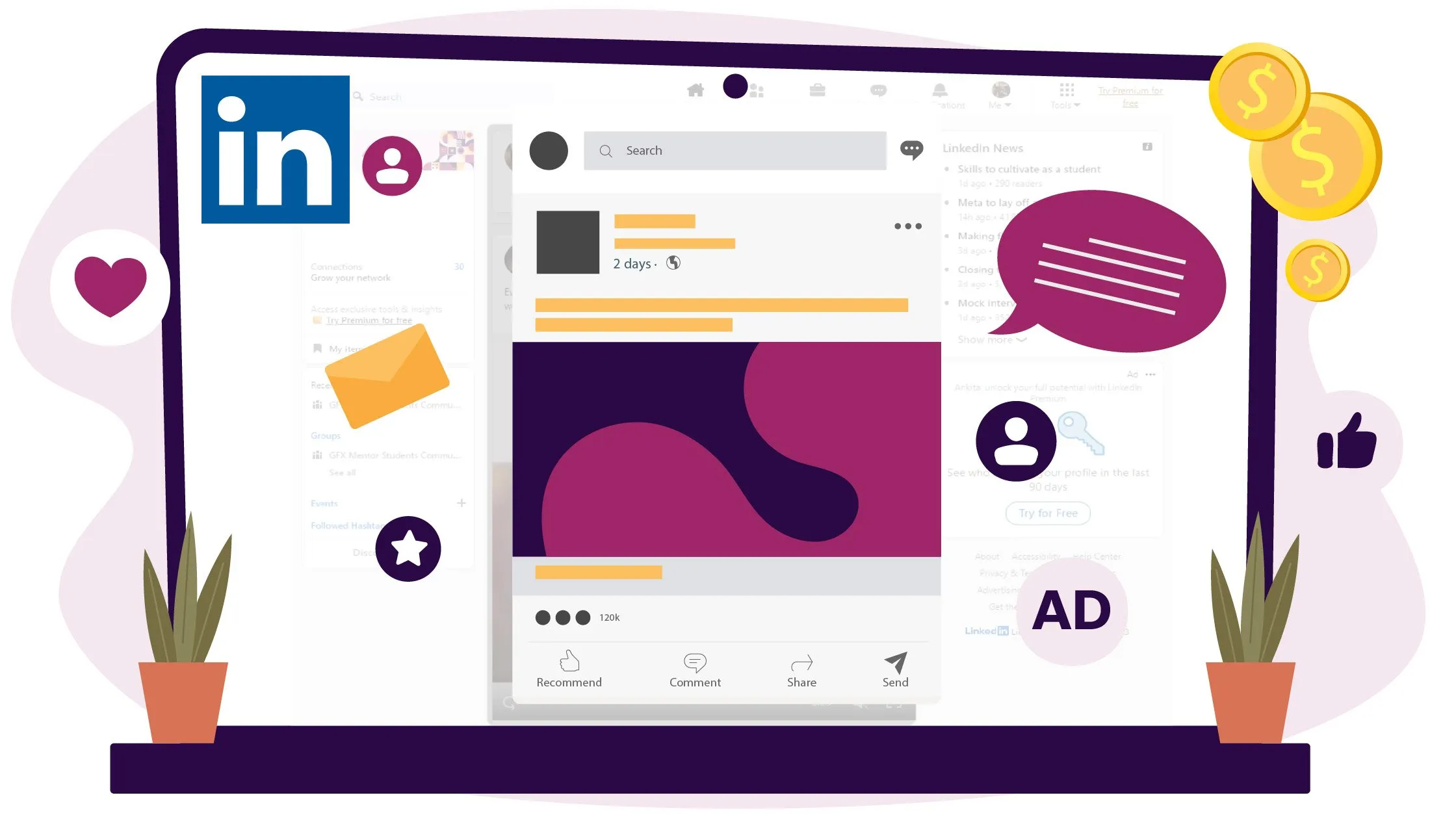LinkedIn advertising has become an essential tool for businesses looking to connect with professionals and decision-makers. Unlike other social platforms, LinkedIn boasts a user base comprised primarily of industry professionals, making it a prime space for B2B marketing. But is the investment in
Understanding the Cost Structure of LinkedIn Ads

When it comes to advertising on LinkedIn, understanding the cost structure is crucial for evaluating its overall value. The costs can vary widely based on several factors, including your target audience, ad format, and bidding strategy. Here’s a breakdown of the key components that influence LinkedIn advertising costs:
- Ad Format: LinkedIn offers several ad formats, including sponsored content, text ads, and video ads. Each format comes with its own pricing structure. For instance, video ads generally have higher production and placement costs compared to text ads.
- Bidding Options: LinkedIn employs a bidding system similar to other platforms. You can choose between CPC (Cost Per Click), CPM (Cost Per 1,000 Impressions), or CPS (Cost Per Send). Understanding these options helps you set a budget that aligns with your goals.
- Targeting: LinkedIn allows for precise targeting based on job title, industry, company size, and more. While this targeting can increase the effectiveness of your ads, it can also raise costs if you're targeting a highly competitive audience.
- Daily and Lifetime Budgets: You can set both daily and lifetime budgets for your campaigns. This flexibility enables you to control your spending while still reaching your audience effectively.
In summary, while LinkedIn advertising can be more expensive than other platforms, its ability to reach a professional audience often justifies the investment. By carefully considering your ad format, bidding strategy, and targeting options, you can optimize your budget and maximize your ROI.
Also Read This: Design Birthday Videos with Canva Birthday Video Template
Success Stories: Businesses That Benefited from LinkedIn Ads

When it comes to advertising platforms, LinkedIn often gets overshadowed by giants like Facebook and Google. However, numerous businesses have discovered the unique advantages of LinkedIn Ads, transforming their marketing strategies and achieving remarkable outcomes. Let’s dive into some success stories that exemplify why investing in
1. HubSpot: HubSpot, a leader in inbound marketing, utilized LinkedIn Ads to target decision-makers in businesses. By creating tailored content and using Sponsored Content, they were able to increase their lead generation significantly. The result? A staggering 300% increase in conversions from their LinkedIn campaigns alone.
2. Adobe: Adobe ran a campaign to promote its Creative Cloud services specifically to creative professionals. Through targeted Sponsored InMail, they reached the right audience directly in their inboxes. This approach led to a 50% increase in sign-ups within just a few months.
3. IBM: IBM leveraged LinkedIn Ads to promote its cloud solutions to IT professionals. By utilizing LinkedIn’s advanced targeting options, they reached over 1 million decision-makers in a short time, resulting in numerous high-value contracts.
The beauty of LinkedIn Ads lies in its ability to connect businesses with a professional audience. With features like precise targeting and analytics, companies can tailor their campaigns to meet their specific goals, leading to real success stories. If these businesses can see such impressive results, it’s worth considering whether LinkedIn Ads could benefit your organization too!
Also Read This: Promote Templates on Instagram with Canva How to Sell Templates on Instagram
Challenges and Drawbacks of LinkedIn Advertising
While LinkedIn Ads can offer unique advantages, it's important to approach them with a clear understanding of the potential challenges and drawbacks. Being aware of these issues can help you formulate a more effective advertising strategy. Let’s explore some common hurdles that advertisers face on this platform.
1. Cost: One of the most significant drawbacks of LinkedIn Ads is the cost. LinkedIn tends to be more expensive compared to other platforms. The cost per click (CPC) and cost per impression (CPM) can be relatively high, which may not fit every budget, especially for small businesses. It’s essential to weigh potential returns against the investment.
2. Competition: Given LinkedIn’s professional focus, the competition can be fierce. Many businesses are vying for the attention of the same audience, making it crucial to have a standout campaign. Without a unique selling proposition, your ads might get lost in the noise.
3. Limited Audience: While LinkedIn has a vast user base, it may not cater to every industry. If your target audience is not active on LinkedIn or if your product is consumer-focused rather than B2B, you might not see the desired results.
4. Complex Setup: Setting up LinkedIn Ads can be more complex than other platforms. The options for targeting, ad formats, and analytics can be overwhelming at first, requiring a steep learning curve for beginners.
In conclusion, while LinkedIn Ads can be a powerful tool for reaching a professional audience, they come with their own set of challenges. Understanding these drawbacks will empower you to navigate the platform more effectively, enabling you to make informed decisions about your advertising strategy.
Also Read This: How to Become a Freepik Contributor: Everything You Need to Know
Measuring the ROI of LinkedIn Ads
When it comes to any advertising investment, understanding the return on investment (ROI) is paramount. LinkedIn Ads are no different. Measuring ROI involves determining the effectiveness of your ads in generating tangible results, whether that’s leads, sales, or brand awareness. Here’s how you can effectively measure the ROI of your LinkedIn Ads:
- Define Clear Objectives: Before launching your campaigns, establish what success looks like for you. Is it website visits, lead generation, or conversions? Having clear objectives helps you gauge performance accurately.
- Utilize LinkedIn’s Analytics: LinkedIn provides robust analytics tools that allow you to track ad performance. Pay attention to metrics such as click-through rates (CTR), engagement rates, and conversion rates.
- Track Conversions: Implement conversion tracking to see how many users take desired actions after clicking your ads. This could involve setting up specific landing pages or using tools like Google Analytics.
- Calculate Costs: Keep track of how much you’re spending on your LinkedIn Ads. You can calculate your total ad spend by adding the costs of all your campaigns.
- Evaluate Revenue Generated: Measure the revenue or value generated from the leads acquired through LinkedIn Ads. This might involve tracking sales or other revenue-generating actions attributed to your ads.
- Assess Long-Term Value: Sometimes, leads generated through LinkedIn Ads may not convert immediately. Consider the long-term value of leads and how they contribute to your overall business goals.
By following these steps, you can gain a clearer picture of your LinkedIn Ads' performance and make informed decisions about future investments.
Conclusion: Are LinkedIn Ads Right for You?
As we wrap up this discussion, the question remains: are LinkedIn Ads the right fit for your business? The answer isn’t a one-size-fits-all; it really depends on your specific goals, audience, and budget.
- Target Audience: If your business targets professionals or B2B clients, LinkedIn might be a goldmine. The platform is tailored for professionals, meaning your ads can reach decision-makers and influencers effectively.
- Budget Considerations: LinkedIn Ads can be more expensive than other platforms. If you have the budget to invest in high-quality leads, it may be worthwhile. However, ensure that the expected ROI justifies the spend.
- Content and Creativity: The success of LinkedIn Ads often hinges on the quality of your content. If you have compelling, valuable content that speaks to professionals, you’re more likely to see positive results.
- Long-Term Strategy: Think about your long-term advertising strategy. LinkedIn can be a great way to build your brand over time, but it requires persistence and ongoing investment.
Ultimately, the decision to invest in LinkedIn Ads should align with your overall marketing strategy and business objectives. If you believe that your target audience is active on LinkedIn and your content resonates with them, it may well be worth the investment. Just remember, always measure and adjust your campaigns for maximum effectiveness!